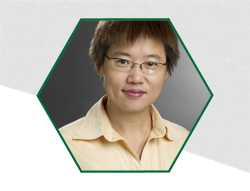Laser polishing proves to be a highly effective method for reducing surface roughness in laser-based optical fabrication. However, it can leave behind residual waviness and shape errors on the surfaces of the manufactured components. In contrast to continuous-wave and longer-pulse lasers, femtosecond (fs) laser processing enables nanometer-scale precision in material removal without inducing thermal melting and subsurface damage. We present a novel method using fs-laser technology for the reduction of shape errors. The selection of optimal laser parameters, guided by the relationship between material removal and energy deposition, enables the achievement of high-precision figuring and smoothing of glass substrates.
To demonstrate the shape error reduction, we first create periodic patterns using deterministic laser-beam figuring to make a sinusoidal pattern on a pristine Borofloat substrate. The pattern measures a periodicity varying from 100 to 250 µm, representing the typical mid-spatial-frequency of 100 µm to 1mm periodicity and a peak-to-valley (PV) height of 17-nm. The reduction in PV magnitude was carried out by selective material removal based on a deterministic material removal metric—a significant decrease in PV and a smooth surface with an RMS roughness of 0.84 nm. We further demonstrated controllable shape error and mid-spatial-frequency error reduction of glass substrates using a femtosecond laser. This spatially selective material removal with nanometer precision results in an optical-quality surface. This demonstration opens a novel pathway for precision shaping, finishing, and reduction of detrimental mid-spatial-frequency errors in optics, using femtosecond lasers.
Keywords
- Femtosecond Laser Based Optics Fabrication
- Laser Processing Of Transparent Materials
- Mid-Spatial-Frequency Removal
- Optical Figuring
- Ultrafast Laser Polishing

